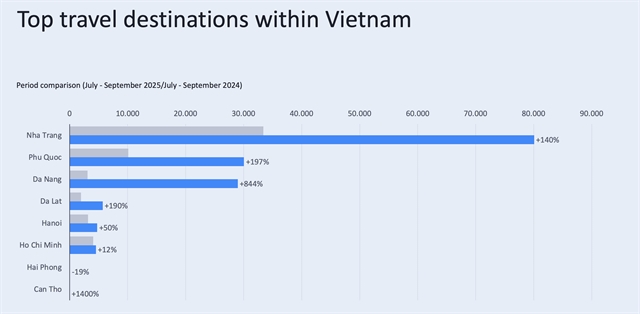 Talking Shop
Talking Shop

 |
| Nguyễn Văn Trọng, deputy director of the Livestock Breeding General Department under the Ministry of Agriculture and Rural Development |
Domestic live hog prices have fallen deeply, while enterprises have kept importing pork. There is a concern that imported pork may be the cause of the dropping domestic pig prices.
Nguyễn Văn Trọng, deputy director of the Livestock Breeding General Department under the Ministry of Agriculture and Rural Development, spoke to Việt Nam News reporter Tố Như about this issue.
Domestic live hog prices have remained at a low rate since mid-November 2022. Why does this situation happen?
The pork supply has remained unchanged while the market demand has decreased since the last months of 2022. That has caused large livestock enterprises and farmers to stop selling pigs at slaughter age.
Every year, during the Lunar New Year, the consumption of pork increases by about 10-15 per cent. However, pork consumption this year has not increased significantly.
That low demand for pork stemmed from the fact that workers were laid off at enterprises in localities such as Đồng Nai, Bình Dương and HCM City.
Many businesses have witnessed reduced orders, leading to a reduction in labour requirements. Many of them retained just 50 per cent of employees. The decrease in income causes workers to tighten their spending.
If that situation continues, the prices of hogs will remain at a low rate.
Domestic pork prices have fallen, but businesses still imported pork. What do you think about this situation?
Now, the pork imports account for only about 3-4 per cent of the total pork volume of the country. The largest imports so far has been about 7 per cent of the total pork volume. This is a rather small number and does not affect the live hog prices on the domestic market.
Imported pork is mostly for processing and is not sold directly in the market.
Therefore, imported pork does not reduce the price of live hogs on the domestic market. A similar situation is seen for chicken and other meats.
In addition, the live hog price has sometimes increased to VNĐ100,000 per kilo on the domestic market. Importing pork has been a solution to cool down domestic pork prices.
How long will the drop in live hog prices probably last in the domestic market?
There is a positive signal that enterprises are receiving more orders, increasing work and income. That is expected to push pork demand up.
The live hog price is expected to increase from the end of March, but not significantly.
The price of live hog will rise to VNĐ55,000-57,000 per kilo. With that price, the farmers gain profits of VNĐ1,000-2,000 per kilo.
At present, the enterprises' live pigs are sold at VNĐ48,000-50,000 per kilo, excluding transportation costs, so they lose about VNĐ3,000 per kilo.
In some localities, the price of live hog is around VNĐ50,000-55,000 per kilo. The prices are reduced by VNĐ2,000-3,000 per kilo compared to the end of December 2022 and VNĐ9,000-14,000 compared to mid-October 2022.
With the current prices, farmers and small-scale farms do not dare to re-herd. In the long term, the farmers still have to follow the production chain, bringing production costs down.
In the context of low live hog prices, Việt Nam needs a strategy for pork reserves to stabilise the market. Without this strategy, no enterprise will dare to re-herd because this is very risky.
In 2017, the price of pigs was also very low, and sometimes under VNĐ20,000 per kilo. However, the businesses did not dare stockpiling pork.
The first reason was that they didn't have a warehouse for stockpiling. On the other hand, the storage and freezing costs were very high. The frozen pork is still quarantined before marketing. If there was any problem, the frozen pork would be destroyed. So, enterprises faced a high risk when keeping pork in reserve.
What is the prospect of exporting pork to the Chinese market?
Officially exporting pork to China is not possible this year or next year.
It takes a long time to negotiate for official exporting all farming products to China. For example, it has taken 6-7 years for negotiations to get permission for the official export of dairy products from Việt Nam to this market.
Việt Nam had to spend nearly four years getting the protocol on official export for its bird's nests. After signing the protocol, the two countries still had to have an agreement on quarantine. Enterprises exporting bird's nests need permission from the General Administration of Customs of China to export to this market.
Meanwhile, China has also set many conditions for the unofficial-quota export of pork from Việt Nam.
In 2018–19, they requested businesses that implement unofficial-quota export of pork to China to raise pigs at the border areas for 30-45 days. After that, China's relevant agencies took samples for testing. If there was no problem, they would permit the import of those pigs.
At present, Việt Nam only exports frozen piglets and suckling pigs to mainland China and Hong Kong. But this is not significant. VNS